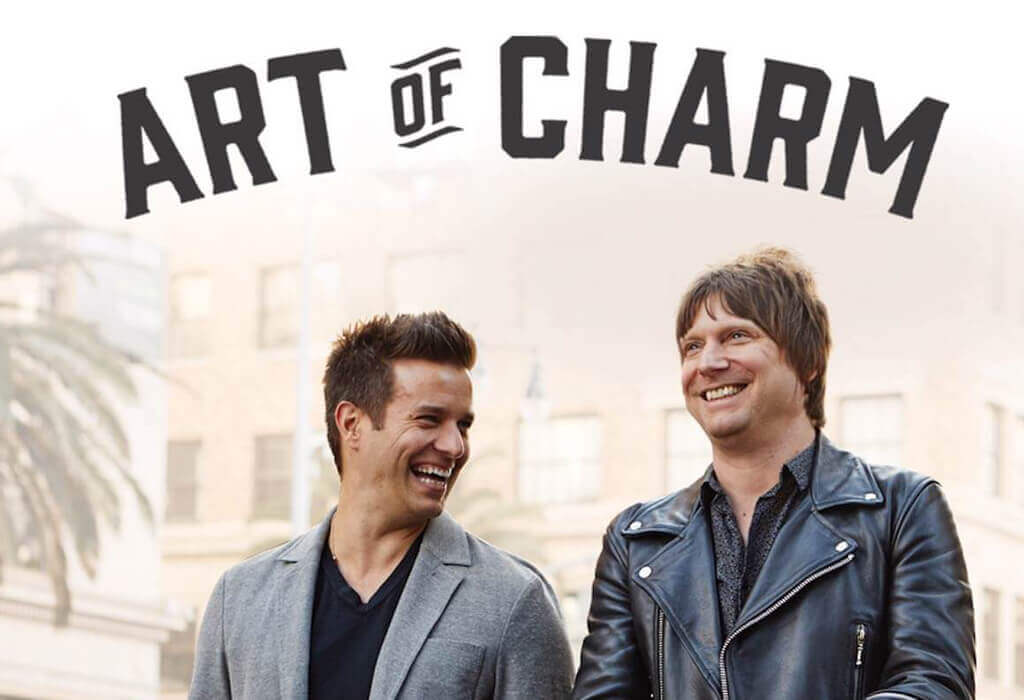Author George R.R. Martin once wrote that “a reader lives a thousand lives before he dies,” while “the man who never reads lives only one.”
Other luminaries who have lived a thousand lives include SpaceX and Tesla CEO Elon Musk, who believes that reading is the fastest way to learn. The members of Chromeo spend most of their time in the library, while business magnates Warren Buffett and Charlie Munger frequently spend entire days reading. Reading alone doesn’t guarantee success, but most successful people share a love for words.
What’s more interesting, however, is how they read. Because more than absorbing the words themselves, the best readers are putting what they learn into action — and that requires them to truly retain the information, which can be tough for even the brightest minds. Ask yourself, for example, whether you can recall the main points from the article you just spent 10 minutes reading. What about that biography you tore through last month? How many novels have faded in your memory once you put them down?
If you’re like most of the population, your retention is probably far lower than you’d like to admit. No matter how much you read, confronting how little you retain might have you feeling more like Guy Pearce in Memento than Bradley Cooper in Limitless. And you’re not alone.
So here’s a process to ensure you learn from what you read, retain that information, and apply it to your life — just like the world’s best readers.
Identify your purpose.
In order to actually learn from reading, you must understand why you’re reading in the first place. Your purpose, or objective, will be your literary North Star. It will keep you from less useful information, like articles with juicy headlines or unimportant curiosities, and orient you toward information that is truly useful. Your objective will inform your reading decisions, so you don’t read mindlessly, which can be tempting. When we talk about the importance of an information diet, this is the first step.
But what makes for a good objective? In short, whatever serves your goals and interests, and helps you prioritize how you spend your time.
For example, one of your objectives might be to climb the ranks of the sales department at your company, which will require you to both up your sales game and learn to manage other people in your division. That intention might guide you toward the best books on sales technique and strategy, which you’ll complement with books on psychology, happiness and motivation. That will help you avoid clickbait articles on trite sales theory and the allure of pop-business books, which are mostly just empty calories.
At the same time, you might also want to unwind before you go to bed with some mindless fun — another perfectly good objective — giving you the greenlight to pick up A Song of Ice and Fire, which you’ll enjoy a few pages at a time over several months. Even a great sales guy needs to relax — and be able to talk Game of Thrones with his customers.
Your goal to advance at work will also guide your journey through multiple books. Once you finish your sales and psychology reading, your objective might lead you to study the best salespeople in your field, and how they got to where they are. That, in turn, might force you to learn about how to maneuver office politics and work on your personal brand. That North Star will keep you on course while remaining open to surprising discoveries, which is one of the joys of reading.
What about learning for learning’s sake? Pure curiosity is a great reason to read, if you balance it with your other objectives. For example, if you’re looking to improve your knowledge on marketing within the next three months, spending 100% of your time reading about deep sea diving will not be an effective use of time. But you might spend 75% of your time reading about marketing and the other 25% reading about the ocean (and find yourself making interesting connections between the two), and satisfy both of your interests.
Whatever your objective, the important thing is to constantly scrutinize your reading diet — just like your actual diet — to make sure you’re taking in the most nutritious material. If you’re about to read an article, take five seconds and ask yourself whether it fits your objectives. Prioritize your sources and check only the ones that are related to your goals. (To that end, you might find journalist Farhad Manjoo’s reading system useful.)
In a world that bombards you with information, and where the cost of clicking is so low, being conscious of what you read is crucial.
Engage with what you read.
Reading should be more of a conversation than a lecture. By reading someone’s words, you’re engaging in a silent dialogue with the author. You can keep up the conversation, and retain the information for years to come, or let the author “speak” until the book is done, and let the words fade into memory. Creating that conversation is one of the best ways to actually learn from reading.
So as you read, don’t just let your eyes read the words. Think about the material. Highlight or mark the passages that jump out at you. Connect passages with related ideas or opposing ones. Write down your questions, your objections, your impressions. If something challenges you, make a note of it. Acronyms can help you remember why you highlighted certain passages. For example, author Tim Ferriss uses “BL”, which stands for “Beautiful Language,” to indicate that he highlighted a passage because it was written well.
By engaging with the material, and not just passively absorbing it, you’re creating a dialogue that will build on what you read and dramatically increase how much you actually remember.
Don’t speed read.
In the age of lifehacks and efficiency, we’ve become obsessed with processing as much information as quickly as possible. We’re all for getting things done quickly, but reading is one activity that actually benefits from slowing down, especially during the most meaningful parts of a book.
Speed reading is also a skill that needs to be perfected. In most cases, speed reading amounts to absorbing words quickly, at the expense of processing the underlying information. Your objective will help you here, too: Do you just want to check a book off your list, or actually learn?
The other benefit of taking your time is to actually enjoy the process of reading. Without waxing philosophical here, the ultimate goal of life is joy. Some ideas are too important, or beautiful, to speed read through. Remember, the goal is to learn, not to get through as many books as possible.
As you become a better reader, though, your reading will naturally increase. You naturally read faster as you grow more familiar with general concepts or ideas that you’ve seen before, and your brain will process language and ideas faster the more you engage with them.
Pick the right format for you.
Between print books, e-books and audiobooks, pick the format that works best for you. I personally prefer print books (usually hardcover) — I like being able to touch the pages and mark them up, I like the smell of paper, and I like the happy accidents that come from other people seeing what I’m reading. Book covers make for great conversation starters, and you can pass along a book once you’ve finished, which is a great relationship-builder.
Some people, especially auditory learners, prefer audiobooks. These usually put me to sleep and feel more like lectures, but they can be excellent formats for people who need to listen. They also allow you to get more reading done on the go (subway rides, road trips and gym workouts will suddenly become much more productive) and can help people who aren’t as keen on reading to benefit from the power of books.
E-books, of course, are the most attractive option for most people, and generally more budget-friendly. They’re also delivered instantly, so you can pull information as you need it. And they make traveling with your reading dramatically easier.
The tradeoff with e-books, though, is retention. Multiple studies suggest that digital formats make it harder to comprehend information, prevent you from navigating text in a satisfying way, and can drain or fail to recruit key mental resources. That seems to be the (pretty steep) price we pay for convenience.
Still, your intentions and engagement with your reading will determine how valuable your reading ultimately is. When it comes to format, choose the one that you feel serves your objectives and experience best.
Record and revisit.
As I mentioned, creating a conversation with your reading is key — and that conversation doesn’t end when you finish the book. Revisiting your favorite passages over time is a great way to keep the most important parts of a book alive. This allows you to enjoy a book long after you finish it, and to apply its lessons as new opportunities and insights arise.
So once you’re done reading a book, return to the passages that resonated with you, using your annotations. I prefer to organize my notes in Evernote — this is by far the best tool I’ve found, and with the “tag” function, your notes will be way easier to search through. If you want to kick it old school, you can also write them in a commonplace book or journal.
Transcribing notes from books into Evernote or your own book used to be painful. Apps like TextGrabber have changed that, by turning book text into readable text with a single photo. They’re great for capturing large segments of text (so that your highlights have context). Truthfully, snapping a photo and double checking the accuracy of the text with TextGrabber is probably a bit slower than typing it out, but it’s easier on the wrists and more relaxing. It affords me a bit more time to think about the quote in question (especially while I’m double checking the text). If you use an eBook reader, you can migrate your highlights into Evernote with the Web Clipper tool.
Whichever tool you use, your goal is to rediscover your favorite passages later, so leave as many cues as possible in the form of tags or headers. (To develop good tags, ask yourself: Who said it? Was it a stat or a quote? Who was this said about? What was the topic? What were the themes? Was it an article or book?) That will make it possible to enjoy your favorite passages later, so that you can…
Process and analyze.
Unless you have a photographic memory, you will almost certainly forget a large chunk of what you read. I actually forget a lot about the specifics of what I read (e.g., exact phrasing, specific references, etc.), which is why I prioritize re-learning. I consider this a vital part of the learning process.
Every 4-6 weeks, author Ramit Sethi sets aside a 30–45-minute block of time to review his annotations from books and articles. This system reminds you of any important points you might have forgotten or otherwise overlooked. Whether the note is from a month, a year, or three years ago, Ramit figures out how these notes apply to what he’s working on in the moment.
While friends can remind us of advice they shared, a book can’t. That’s up to us. So we have to remind ourselves of what we took away with our own personal process. If you use Evernote, develop a routine to revisit your notes — either a monthly review of your notes, or a search for tags that relate to your current career, relationships and life. You can develop a similar process with a traditional notebook, though the analog format might make revisiting your favorite passages more serendipitous and random.
Apply what you read.
If you follow everything we’ve talked about so far, then you’ll definitely be learning more from what you read. (Hooray!)
Now the question is: What do you do with that material?
This begins by really engaging with the material, as we described above. Ask yourself: Is this point valid, or is the author off base? Do you agree with the information? What makes this an especially beautiful passage? Why is the author tackling this problem? How does this argument square with your existing beliefs? Do you have new questions or concerns as a result?
If you really try to answer these questions, the process of answering them will reveal all sorts of exciting ways to apply what you learn. A surprising study in a psychology book might inspire you to send a summary of the passage to your boss, so you can improve team meetings. An approach to sales you disagree with might make for a great conversation with your team the next day. A well-written passage about friendship might be just the thing you need to reconnect with an old friend. Or maybe you don’t know what to think or feel about something you’ve read — which can be the beginning of a fruitful discussion with your colleagues, partner or friend.
The key question to guide this process is why. Why does a passage move you? Why do you agree or disagree? Answering the why will lead you to the how — how to put the material to good use out there in the world.
As you read, continue to move between the why and the how. If you’ve just learned about a new marketing concept, spend five minutes thinking about why it might work — and how it could apply to your job or company. Push it even further: Imagine how a hypothetical strategy, product launch, or campaign would look using that concept. If this brings up new gaps or questions, then that might send you seeking out new reading material, and the process begins again.
As you apply what you read, continue to record your responses. Evernote would be a great tool here too, as would an organizer like Trello.
Package and share what you read.
Done right, reading can transform your life. Done exceptionally, it can transform the lives of the people around you.
One powerful way to maximize the value of reading is to pass a book or article along to someone else. Tons of life-changing insights are stored in books that sit on bookshelves or on Kindles, unused. That information could make someone else’s life easier or more fulfilling, and help you build a stronger relationship. (In fact, sharing knowledge is one of the most effective ways to network. Handing someone a book with your annotations can be more powerful than an email or a gift.)
You can also pass along the insights you’ve shared, without handing someone an entire book (which, especially for important people, can feel like yet another to-do). Remember those quotes and passages you highlighted in your books? Those make for great communications. You can pass quotes along to people by email when the opportunity arises, providing encouragement, celebration, perspective, and insight they might not have gotten otherwise. There’s no need to be ostentatious or go overboard with these. The goal isn’t to look smart, but to extend the lifespan of the ideas that helped you.
Work is a terrific place to share your ideas in the right time and place. You can contribute to your team and stand out as a thought leader by sharing industry data, book excerpts, or expert opinions from your reading. Most people don’t do this at work, which makes any knowledge-sharing stand out as exceptional.
Reading can also become fuel for your relationships. I forward cool excerpts and links to articles (or entire books) to clients or musicians I’ve interviewed, keeping those friendships alive. I’ll pass key insights to researchers at my agency for their own personal development. The Art of Charm team constantly exchanges scientific studies and productivity tips, and has created deep bonds with staff and clients by making reading a big part of the conversation.
So let’s look at how reading might look using this approach.
Let’s say that you have a stable 9-5, and you’d like to make some additional money freelancing. You figure that there are two ways to do this — either to increase the amount of work you do, or to increase your rate.
So now you know your purpose: to improve your personal productivity and to study how pricing works.
So you search for blog posts, articles, and books about the subjects. You realize that both have quite a bit to do with psychology — your productivity is about managing your own psychology, and pricing is about working with other people’s psychology. That objective guides you to works on behavioral psychology, cognition and economics. You clip specific email scripts or sentences and drop them into Evernote, filed under tags like “career,” “freelancing,” “value” and “perception.”
A couple of weeks pass, and you’ve been slammed with work. The information you’d acquired earlier falls to the back of your mind, as usual, but you made a 30-minute appointment in your calendar to revisit your annotations. You pull your notes up in Evernote, and after five minutes of browsing, you realize that you can try a couple of different pricing techniques with one of your existing clients.
You write down these notes in Trello and try them during the week. One pricing technique worked, but the other fell flat. At the same time, you noticed that your personal productivity spiked, then crashed by the end of the week. So you make comments in Trello to stick with the first technique, tweak the second, and pay attention to how you spend your time next week.
Over the following weeks, you continue to use and adjust your techniques, and measure your progress by total hours spent and freelance income earned. You write down your thoughts and techniques, and tag them for future reference. Your reading, put into action, becomes a kind of ongoing playbook for your life.
Along the way, you become friends with a freelancer in another industry, and you send her your reading list, along with some of your favorite references and best insights. She puts them into practice, starts to see the results, and starts forwarding information back to you. Together, you build a collaboration that was born from your reading and continually feeds on it.
Living a thousand lives
Despite their simplicity, each of these tweaks will dramatically change the way you learn from reading. Follow your objectives and curiosity to read with a purpose. Have a conversation with the book or article. Make notes and review them constantly. Think about how you can apply these lessons to your life. Share your insights with friends, family, and colleagues. Then watch as you extract multiples of value out of each book, blog post, and article.
Remember, knowledge is only potential power. It takes on a kinetic energy when you retain it and apply it. So happy reading, and happy sharing!





